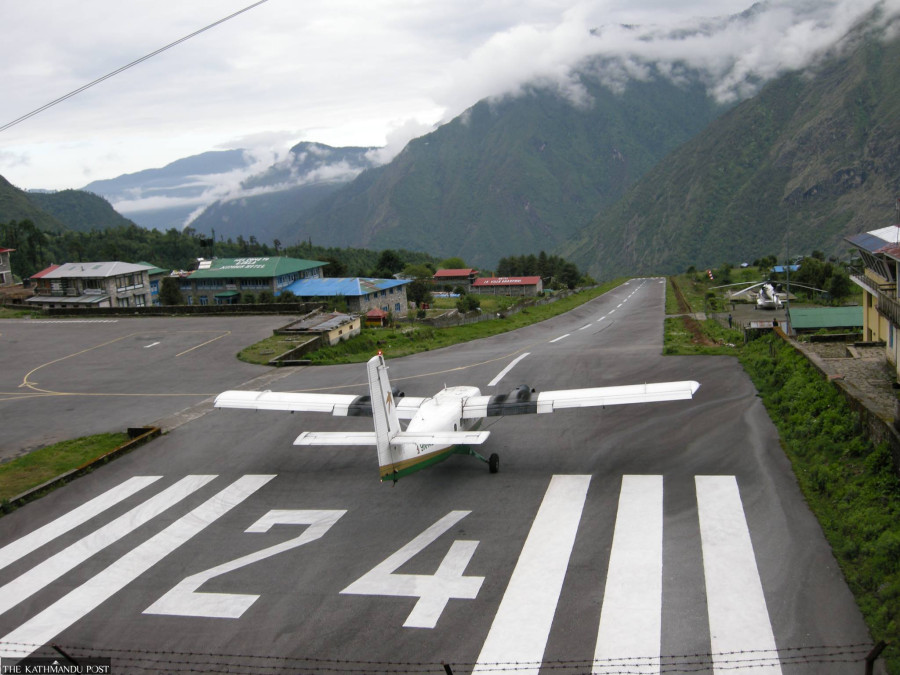Money
Two long-delayed civil aviation bills return to federal parliament
Bills vital for safety of Nepali skies and opening up Nepal’s airports to private investment.
Sangam Prasain
Tourism Minister Badri Prasad Pandey re-registered two long-pending civil aviation bills in the lower house of Parliament on Sunday—three years after their passage by the upper house.
The Civil Aviation Authority of Nepal Bill and the Air Service Authority of Nepal Bill propose splitting Nepal’s aviation body into two entities: a regulatory body and a service provider—a key requirement for Nepal to be removed from the European Commission’s air safety list.
These bills have been going around in a legislative loop for over a decade and half, with successive governments making assurances to international aviation bodies but failing to follow through.
Minister Pandey emphasised the importance of the bills in the revised framework.
“As Nepal is a contracting state to the Convention on International Civil Aviation, 1944, it must comply with international policies, directives, and standards established under this Convention,” reads his bill statement.
Nepal’s overlapping regulatory and service provider roles were first identified in the Universal Safety Oversight Audit Programme (USOAP) conducted by the International Civil Aviation Organization (ICAO) in May 2009.
The findings were reiterated in audits held in 2013, 2017, and, most recently, in 2022, reaffirming the urgent need to separate these functions.
Nepal has also committed to institutional reforms at various international aviation forums, including the ICAO Assembly and the Conference of Directors General of Civil Aviation, Asia and Pacific Regions.
The push for separation dates back to May 25, 2010, when Nepal and the Asian Development Bank (ADB) signed a financial agreement for the Air Transport Capacity Enhancement Project.
The ADB-funded Spanish consultancy INECO prepared the first draft of the proposed legislation in 2014, following approval from the Civil Aviation Authority of Nepal (CAAN) board in 2010. The cost to prepare the draft was $4.2 million.
Minister Pandey asserted that the new law will resolve the long-standing conflict between the regulatory and service provider roles, enhancing professional accountability, employee motivation, and overall quality in aviation operations once enacted.
The Air Service Authority of Nepal Bill establishes a seven-member board chaired by the tourism secretary, including joint secretaries from the tourism, home Affairs, and finance ministries.
It also includes two private sector representatives, one female member with at least 10 years of relevant experience, and the executive director as the member secretary.
The executive director will be appointed through open competition, with candidates requiring a postgraduate degree from a recognised university, 15 years of civil aviation experience, and five years in managerial roles. The executive director will serve a four-year term.
The bill allows individuals or entities to build helipads for private use after obtaining approval from the tourism ministry. It also opens national and international investment in Nepal’s airports, enabling public-private partnerships for construction, upgrade, and management.
Similarly, the Civil Aviation Authority of Nepal Bill establishes a regulatory body separate from the service provider. The director general will be appointed for a four-year term from among the senior officials of the authority or joint secretaries.
A five-member board, chaired by the tourism minister, will include two joint secretaries from the tourism and finance ministries, an expert with at least ten years of experience in civil aviation and a postgraduate degree, and the director general as a member secretary.
The bill grants more authority to the pilot-in-command, ensuring flights operate under safe conditions and allows the pilot-in-command to restrain or remove individuals who endanger aviation safety.
Despite being vital for aviation safety, these bills have faced persistent political delays.
In August 2021, the upper house unanimously passed the bills, which had been stalled for over a year due to political turmoil.
They were registered in the lower house on February 23, 2020, but were withheld from discussion on March 2, 2022, at the request of the then Tourism Minister Prem Bahadur Ale. He had cited opposition from aviation regulator employees against the organisational split.
The situation worsened when President Bidya Bhandari prorogued Parliament on March 15, 2022, sending the bills into indefinite limbo.
They were returned to the tourism ministry following the 2022 general elections.
Sudan Kirati, the then tourism minister, attempted to reintroduce the bills after Ale, and then tourism minister Jeevan Ram Shrestha failed to push them forward.
On July 16, 2023, the bills were submitted to the Prime Minister’s Office, where they stagnated for over a year when then Prime Minister Pushpa Kamal Dahal stopped their passage to Parliament.
Nepal’s failure to implement aviation safety reforms has led to a ban on its airlines from European Union (EU) airspace since December 2013.
The ban followed the September 2012 crash of Sita Air Flight 601, which killed 19 people, including seven British citizens. This incident and multiple air crashes between 2008 and 2012 raised serious concerns about Nepal's aviation safety standards.
Even after the Covid pandemic, Nepal has seen eight air crashes, including six fatal ones, with over 100 deaths.
The European Commission and other international aviation watchdogs continue to monitor Nepal’s air safety developments, urging the government to pass the aviation reform bills.




 13.58°C Kathmandu
13.58°C Kathmandu














